In 1971, author Wallace Stegner published his novel Angle of Repose, which went on to earn a Pulitzer Prize. The book is widely considered to be one of the best novels of all time; it is simultaneously a slice of life from the American Victorian West, a novel focused on environmental concerns, and a love story at once both tragic and uplifting.
Not everyone, however, found it wonderful – the extended family of author and illustrator Mary Hallock Foote were dismayed by the portrayal of the female protagonist, a fictionalized version of their progenitor. In an attempt to set the record straight, they contacted the Huntington Library in San Marino, California, and one year later Foote’s unpublished biography, entitled Reminiscences: A Victorian Gentlewoman in the Far West finally appeared in print.
Recommended Reading
Diverse Threads in the History of the United States: The Life of Booker T. Washington
FREEDOM! The Real Life and Death of Sir William Wallace
Who was Grigori Rasputin? The Story of the Mad Monk Who Dodged Death
Over the years, literary and historical buffs have debated whether or not Stegner’s portrayal was appropriate given the tenor of the time. At the same time, an interest in the actual life of Mary Hallock Foote has grown apace. While Foote is not nearly as well-known as she should be, her name has at last earned wider recognition.
Today, her legacy is of a series of contradictions: a proto-feminist perhaps uncomfortable with that title, a woman prevented from fully exploring her sexuality by the mores of her time, and an artist/writer from a setting that did not encourage posterity.
Mary Hallock Foote, or “Molly” as she was called, was born in 1847 in the state of New York. Raised by Quaker parents, she was given an education beyond that normally enjoyed by daughters, and was encouraged to explore her intellectual and creative interests. Because of her artistic abilities, she was accepted to the Cooper Union School of Design in 1864, at the tender age of seventeen.
This is where she met the woman who, in a different era, might have been regarded as the love of her life, Helena deKay. The two became fast friends; Helena’s more aristocratic upbringing meant that, through her, Mary was introduced to many luminaries of the New York art scene. When finished with school, the two never lived in the same area, but through their letters, they stayed connected for over fifty years, until Helena’s death in 1916.
What was the actual state of their relationship? Today, our comfort level with discussing sexuality leads us to immediately characterize an intense female friendship as potentially lesbian. During the Victorian era, however, such talk was simply not allowed. What was permissible, however, were female friendships that used intense romantic language to describe the connection. As they wrote to each other, Helena and Mary were outspoken about the depth of their connection; indeed, Mary later characterized their introduction as a ‘rosepink winter sunrise.’
In writing about their correspondence, historian Carroll Smith-Rosenberg describes their letters as discussions of ‘nights wrapped in each other’s arms’ and of ‘bathing and anointing each other’s bodies.’ Whether or not the relationship was ever consummated, there is no doubt of its importance in the lives of each woman. While each of them married men, the two continued to intertwine their shared passions for art and literature; Helena’s husband, poet Richard Gilder, became Mary’s editor and regularly published her work in Century magazine.
After finishing her education at Cooper Union, she moved back home, working on a series of commissions for Scribner’s magazine. She and Helena corresponded regularly, frequently discussing the problem that both women faced: should they continue to work as artists or focus their efforts on marriage and children? Beautiful women both, the two enjoyed lively social lives and regularly met interested men. Both accepted the idea that a married woman should focus her efforts on home and family; both were simultaneously excited and terrified at the thought.
Hoping to make their marks as artists while it was possible, the two considered opening a studio in New York together, but the scheme failed to materialize. No doubt meeting their future husbands was a factor, but Molly was also concerned about the propriety of such an enterprise, and ultimately determined that her status as a single woman meant that she should best live with her parents.
During the 1870s, Molly worked as an illustrator, providing drawings for such luminaries as Henry Wadsworth Longfellow, the Alcotts, and, perhaps most importantly, Western writer Bret Harte. Her relationship with Arthur deWint Foote, whom she met through mutual friends in 1872, began to grow during this time.
Latest Biographies
Queen Zenobia: The Charismatic Empress of Ancient Syria
Eleanor of Aquitaine: A Beautiful and Powerful Queen of France and England
Frida Kahlo Accident: How a Single Day Changed an Entire Life
An engineer, Foote’s interest in traveling the world originally meant that he planned to work in Palestine; however, after meeting Molly, he revised his goals and went ‘out West’ to develop his career. The two corresponded for four years while he gained experience at various sites, and Molly used the time to develop her career apace and to stay in touch with Helena, who had married Richard Guilder by this time. Molly and Arthur finally married on February 9 1876.
Molly now moved across the country to the wilds of California but continued her illustration work from afar. Living at the New Almaden mine outside of the then-hamlet of San Jose, she felt isolated from the other families in the area. The two lived close to the mine, far from the other engineering families, and thus were unable to maintain a steady social life with those of her own ‘ilk’. As the wife of an engineer, however, it was not appropriate for her to socialize with miner families. This isolation drew her closer to her husband, and the two spent time exploring the area and enjoying each other’s company. In her letters to Helena, Molly began to ‘scribble’ about her experiences. Gilder suggested that she develop her ideas into more polished pieces, and A California Mining Camp was first serialized in Scribner’s in February 1878.
Foote’s writing proved popular because of her previous artistic training. As an Easterner living in the West, she found many everyday facts remarkable, relating them in visually arresting language. In characterizing the mine, for example, she writes “…the men’s heads show above the top of a ‘skip’, the bell strike, the engineer moves a lever, the great wheels of the engine slowly swing round and the heads disappear down the black hole. I can see a hand waved and the glimmer of a candle for a little way. The spark grows fainter and a warm, damp wind blows up the shaft.” Eastern readers in their civilized homes were being granted a vision of life on the other side of the continent, and they thoroughly enjoyed it, clamoring for more.
The family moved often, from San Jose to Deadwood, Wyoming; to Leadville, Colorado, and then in 1881, to Morelia, Mexico. Mary continued to describe the settings and stories of their lives in a series of articles written for The Century. In 1884, the Footes moved again, this time to Idaho, where they would live in relative poverty for a dozen years. By now, Molly was the chief financial support of the family; whether because of his extremely honest nature or because of his assumption that others were like him, Arthur Foote proved to be a poor businessman. At this point, there were four mouths to feed, and the Footes ended up living outside of Boise in a home that Arthur constructed from the lava rocks alongside the cliffs of a nearby canyon. The isolation took its toll on the sociable Molly, but it also gave her time to finish and edit her first novel, The Led-Horse Claim. This work, a romance built atop her knowledge of mining camps and the people who lived therein. Serialized in The Century, the novel was then published in book form to wide acclaim, and Foote’s popularity as a writer surged.
Life in the American West was hard, and the recession that swept the United States during the 1880s made it doubly difficult to escape poverty. Molly managed to support her struggling husband and children by writing more romances based on her experiences. The Last Assembly Ball, The Chosen Valley, and Coeur d’Alene were published over the course of the next decade, followed by two collections of short stories, In Exile and Other Stories and The Cup of Trembling. These works allowed her to keep food on the table and a roof over her and her children’s heads; her husband eventually began to travel in search of badly-compensated jobs that appeared to be his only source of income. Finally, Arthur was offered a permanent position in Grass Valley, California, and by 1899 the family was once again living in that state.
Molly continued to write fiction, although her style changed with the demands of her readers. She also continued to write letters to Helena deKay Gilder. As the century ended, Molly and her coterie moved into middle and old age, and family tragedies such as the death of her daughter caused periods where Foote’s output dwindled significantly. Richard Gilder died in 1909, with Helena following seven years later. Molly and Arthur would live into the 1930s, and the two happily spent the last third of their lives in greater financial security. Their last house, known as both North Star House and as Foote Mansion, was designed by renowned architect Julia Morgan and completed in 1905; the Footes then entertained on a grander scale, providing hospitality for investors from the East Coast and notable West Coast personages. In 1929, the Footes sold the house to their son, Arthur Burling, who lived with his family there until his death in 1964. Four years later, when his widow died, his children sold the property. After a series of proprietors, the North Star Conservancy gained ownership in 2006. Today, the house still stands as a historic property and can be rented for parties and weddings.
By 1922, Mary Hallock Foote had stopped writing fiction, turning to her memoirs. She worked on Reminiscences until her death, but the work remained unpublished for many decades while she fell into obscurity. The birth of the ecology movement in the 1960s led to a resurgence of interest in the Far West, where so much land was (and continues to be) under threat of development. When Wallace Stegner wrote Angle of Repose, he did so out of a desire to bring past beliefs about man’s domination of nature to light and naturally turned to the lives of the Footes as emblematic of Victorian attitudes still influencing environmental policy. Stegner combined Molly’s relationship with Helena and that with her husband; he also invented an adulterous liaison for her that added to the tension between the two protagonists. In Stegner’s hands, the characters became emblematic of those who made mistakes and sought forgiveness but ultimately ruined that which they loved with their beliefs and actions. At the end of the novel, the narrator (a man researching the aforementioned lives) resolves to make different decisions in the future.
How well does Angle of Repose represent Mary Hallock Foote? Not well, for a number of reasons. First of all, the novel doesn’t convey the depths of Foote’s artistic and literary achievements; from three thousand miles away, she was able to command and hold the attention of the literary world for a number of decades. In addition, his depiction of her ‘relationship’ with the Gilders short-changes her feelings for both Helena and Richard (her friend, editor, and literary mentor). In 1971, the nascent LGBT movement was not in the public eye, and a potential same-sex love was ‘box-office poison’; so too was the idea that two Victorian women may have been in love without realizing what was happening. Then, too, Molly was married to her husband for fifty-seven years, bearing three children and living for the last third in apparent domestic bliss. Stegner’s novel attempts to describe the various forms that love can take, but he was not able, for many reasons, to completely characterize the complexity of Mary Hallock Foote and her various close relationships.
Explore More Biographies
Catherine the Great: Brilliant, Inspirational, Ruthless
Mahatma Gandhi: Life, Beliefs, and Death of a Famous Spiritual and Political Leader
Nathan Bedford Forrest: Life and Service of the Military Genius
William McKinley: Life and Death of the 25th President of the United States
Joseph Mengele: The Nazi Angel of Death
The Right Arm of Custer: Colonel James H. Kidd
It’s doubtful that Foote would have characterized herself as a proto-feminist, but in hindsight, this seems like an appropriate designation. Although a sophisticated Easterner, she was willing to surrender herself to the adventures of living in a mining camp. Poverty in the face of a growing family did not stop her from writing; in fact, she became the principal breadwinner. Was this because there seemed to be no other alternative? Perhaps. The fact remains that Molly took her talents and used them as necessary to support herself and those she loved. Today, we talk about being able to marry for passion rather than for economic security as though we have invented the concept; Foote lived it. When the family finally relocated to California, she was at last able to indulge her love for fine living and entertaining, but a part of her always remained focused on the wild days of her thirties and forties as the wife of a pioneer. The Victorian gentlewoman would have rejected the trappings of feminism, but the inward personality lived the essence of it.
READ MORE:
The History of Young Adult Literature
Ida M. Tarbell, a Progressive Look at Lincoln
BIBLIOGRAPHY
Foote, Mary Hallock. “A California Mining Camp.” The Century Magazine, February 1878, pp 480-493.
Hall, Sands. “A Brief Look at the Literary Life of Mary Hallock Foote.” California State Library Foundation Bulletin, No 83, 2006.
“Mary Hallock Foote.” Prospector: The Newsletter of the Idaho State Historical Society’s Junior Historical Program. February 2004.
Miller, Darlis. Mary Hallock Foote: Author-Illustrator of the American West. University of Oklahoma Press, 2002.
The North Star House. North Star Historic Conservancy, 2017.
Smith-Rosenberg, Caroll. Disorderly Conduct: Visions of Gender in Victorian America. Oxford University Press, New York, 1985.
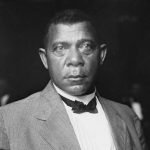
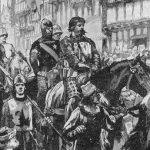


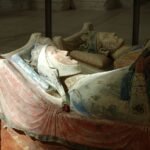



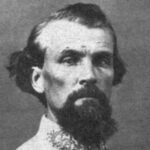


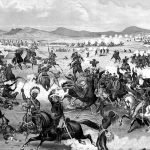
What a fascinating life she lived. Thanks for sharing this.
In “A Woman of the Wild West: The Life of Mary Hallock Foote” it states that Arthur D. and Mary Foote sold the North Star House to their son, Arthur B. Foote in 1929. That is not correct. The North Star House was built and owned by the North Star Mine, owned by the Corporation started by James Hague when Hague bought the North Star Mine in the 1880s. In 1929, Newmont Mining Corporation bought the North Star Mine. At that time Arthur B. and Jeannette Foote bought the North Star House and approx. 14 acres from Newmont.
Joan Clappier
Volunteer and Community Engagement Specialist for North Star Historic Conservancy.
We are restoring the historic North Star House.